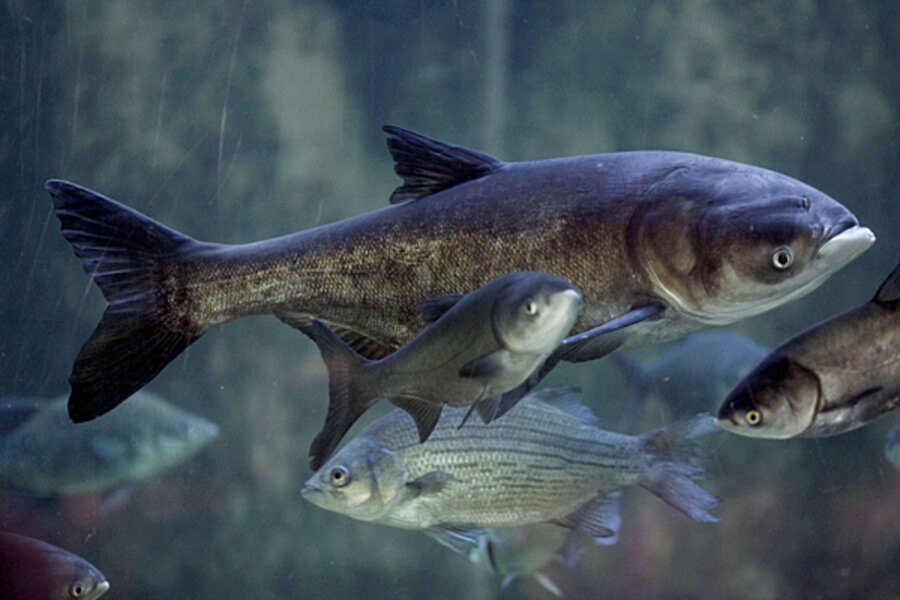Asian carp: how one fish could ruin the Great Lakes
The Asian carp's presence is highly contentious in the Midwest, with ramifications that could affect the economy as well as the environment. Here's a primer on the Asian carp and why this invasive species poses such a threat to the Great Lakes ecosystem.
What is the Asian carp?
It's a collective term that describes four species of fish that originated in China but have shown up in the United States: the silver, bighead, grass, and black carp. The bighead and silver carp are the ones that have made their way to the front door of the Great Lakes system.
Grass and black carp can be found farther south, in the Mississippi River. But "they're not knocking at the door [of Lake Michigan] yet," says Jennifer Nalbone, director of navigation and invasive species for Great Lakes United, a coalition of advocacy groups.
IN PICTURES: The 20 weirdest fish in the ocean
What makes the Asian carp such a threat to ecosystems?
"Successful invasive species do a few things well: They eat a lot and they reproduce quickly," says Ms. Nalbone.
That describes Asian carp precisely. Its stomach lets a tremendous amount of food pass through rapidly, allowing the bighead, for example, to grow as big as 60 inches long and 110 pounds.
They also reproduce quickly. A female bighead can carry up to 1 million eggs in a lifetime, says Nalbone. Hence, once they are in a water system, it is difficult to stop their reproduction.
Do the carp pose any physical threat?
Yes. The fish are known to jump up to 10 feet into the air when frightened. In 2007, the Environmental Protection Agency reported injuries to boaters that included black eyes, broken bones, and concussions due to collisions with the fish. "If a boat's going 15 knots and a 40-pound fish hits, [it's] going to injure people," says Thomas Murphy, former editor of the Journal of Great Lakes Research.
Kurt Hettiger, chief aquarist at the John G. Shedd Aquarium in Chicago, recalls motoring through waters while holding garbage-can lids to protect himself from the fish's flinging bodies. "If you're motoring along where their biomass is heavier, they jump all over the place," he says. "They frighten each other if they're feeling vibration in the water."
Do Asian carp have any natural predators here?
No. Because they evolved to consume so much in so little time, Asian carp grow quickly, overwhelming their competition with sheer size and power. Besides plankton and vegetation, they feed on eggs of native species. In other words, they not only eat the food of their competition, but they also eat the competition before it has a chance to develop.
"They can eat one-third of their body weight in a day," says Mr. Hettiger, "so if you're talking a 90-pound fish, that is 30 pounds of food a day, so they can reproduce very rapidly."
If the fish is native to China, how did it get to the US?
The grass carp was introduced into the US in 1963, according to the US Fish and Wildlife Service, while the bighead, silver, and black carp showed up in the 1970s.
The fish helped to regulate catfish farms and government fish hatcheries in Arkansas and Mississippi, but river flooding allowed them to escape. Over decades, the carp migrated into the Mississippi River system and then into the Illinois River system. Testing in January showed Asian carp DNA in Lake Michigan, the farthest north that evidence of the fish's travels have been found.
Has the Asian carp been discovered in the Great Lakes before?
Yes. A few bighead carp were discovered in Lake Erie, but their numbers did not suggest a reproducing population.





